Wondering how to increase conversion rates for your e-commerce store?
You’re in the right place.
I’m going to show you how to raise your conversion rate with some incredible e-commerce copywriting strategies.
According to data, the global e-commerce market has an average conversion rate of 4.14%.
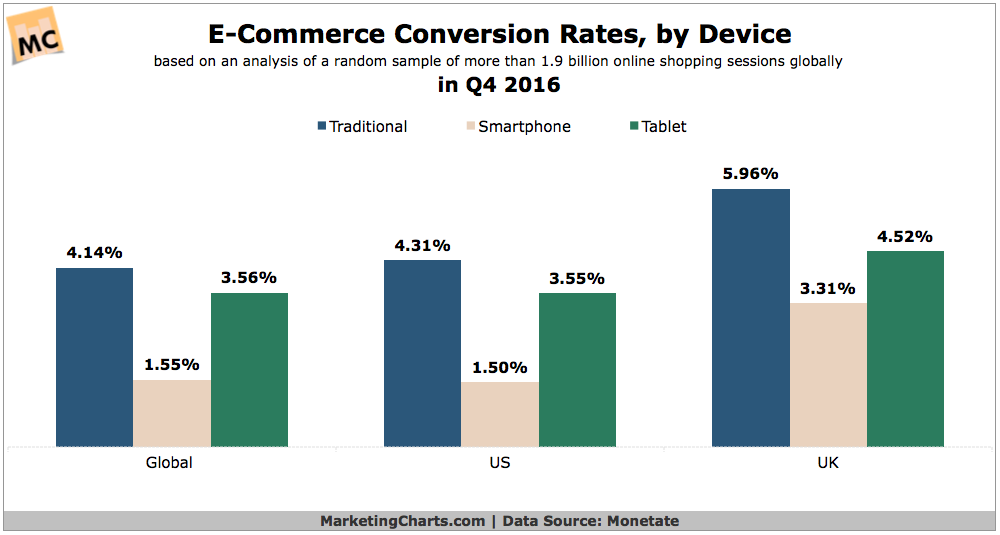
How does yours compare? Is it higher? lower?
If it’s below the average, then the strategies ahead will give it a great boost. Heck, even if it’s higher, I’m confident you’ll be able to raise it even more.
Ready to make more sales? Then let’s get into it!
How Do You Write a Copy for E-Commerce?
I recommend reading my blog post on the copywriting process for a deeper understanding, but let me give you an overview of writing e-commerce copy.
First things first, you have to know your audience inside and out. What are their hopes, dreams, fears, and frustrations? What keeps them up at night?
Once you’ve got a handle on that, it’s time to get down to business. Start by crafting a killer headline that grabs attention and piques curiosity. Or, if you’re writing an email, write down some subject line ideas. Some things you can do for both include:
- State a benefit of the offer.
- Use social proof to build trust.
- Create a sense of wonder and curiosity.
- Leverage the law of specificity using exact numbers, examples, etc.
- Target the pain point of the customer.
- Ask a relevant question.
Then, dive into your product descriptions – but here’s the key: don’t just focus on features, focus on benefits. Show your customers how your product will make their lives better, easier, or more enjoyable.
And don’t forget about social proof – mix in some reviews or testimonials to build trust and credibility.
Oh, and one more thing: always include a clear call-to-action (CTA) that tells your customers exactly what you want them to do – whether it’s adding a product to their cart, signing up for your newsletter, or following you on social media.
E-commerce Copywriting Tips
Every word has an emotion behind it. If you use the right ones, customers will be more likely to buy from you.
That’s a good way to sum up copywriting.
But, it’s an art and science that you have to master.
Improving the copy of your product pages and other areas of your store could increase sales by double digits. Yes, double.
Look at GamesForLanguage. They offer games that teach users how to learn various languages. They tested their main button call to action and the results were unbelievable.
This was the original page:

And this was the new copy:

They changed two words and do you know how much conversions increased? 83.4%!
That’s the beauty of conversion copywriting. Small tweaks can make massive changes in results.
Granted, they aren’t an e-commerce website, but it doesn’t matter. The rule still applies. Imagine how much more sales you could be making by improving and testing your e-commerce copywriting.
That’s just scratching the surface. Let’s dig deeper.
1. Features Versus Benefits of Your E-Commerce Product
When writing product descriptions, ensure that you speak about the benefits that the product has to offer.
This might sound obvious but you’d be surprised how many brands make this mistake and it’s costing them customers.
So, what do I mean by benefits?
Benefits are the emotional or lifestyle gains that someone would get from purchasing your product. Imagine that you sell clothing which is a common e-commerce market.
The benefits of apparel would be confidence, higher self-esteem, and an improved image. The features are the material, sizing, and colours. See the difference?
Features are obvious and have to be stated, but customers want to know what’s in it for them. So, let them know! My tip would be to try to tie emotional appeal into it.
The purchasing process is heavily influenced by emotion, that’s why confidence or self-esteem as I mentioned works so well. What emotions do your customers feel by using your product?
Look at Nike for example, they implement benefits into their product descriptions.
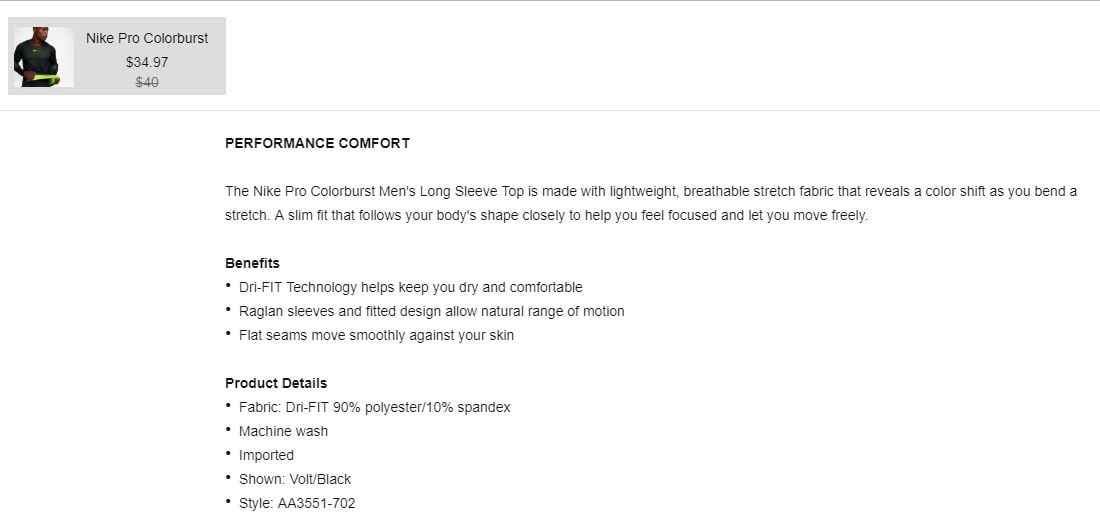
Customers will be comfortable, dry, and get better performance while wearing this compression shirt during exercise. Below, the features (product details) are stated.
Read my full guide to product description copywriting to learn more. My blog post on future pacing is another good resource for mastering emotional writing.
2. Use Strong Calls to Action To Push Customers To Buy
Keep reading if you want to learn how about e-commerce copywriting.
Do you know what I just used?
A call to action.
And they are very important for your e-commerce store. They are simply a phrase or statement that tells the customer to take action. It makes the purchasing process less passive and entices them to buy.
The software company 37signals is the perfect example. Originally, their call to action button had the text “Free trial” and “Sign-up for a free trial.”
It didn’t bring them many results.
So, they changed it to the following:
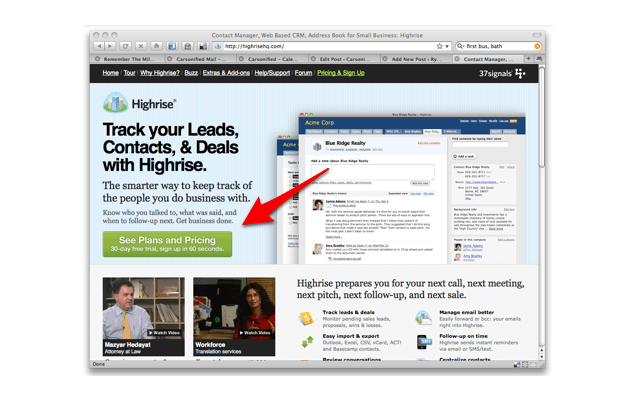
Their signups increased by 200%. Not too shabby.
One of the first places to test a call to action is the add-to-cart button. Normally, it may be something like:
- “Add to cart”
- “Add to bag”
Variations I would recommend trying include:
- “Buy now”
- “Purchase now”
- “Add”
- “Buy”
- “Shop”
Calls to action can also be used for opt-ins. Do you offer a newsletter? Email marketing is a powerful technique for growing e-commerce sales so you should be.
Add a call to action on the opt-in form to make users want to sign up, like:
- “Subscribe now”
- “Sign up today”
- “Sign up for our newsletter and get X”
Every page on your e-commerce shop and marketing assets needs CTAs. Think of each page’s main goal and create a call to action around that.
Learn more about calls to action copywriting.
3. Make Your Product Exclusive
Everyone likes to feel special and unique.
Look at brands like Louis Vuitton or BMW. They’ve mastered this idea in their branding and products.
They make their customers feel like they are in a clubhouse that only the elite can join. This is a timeless e-commerce copywriting strategy that can easily spike e-commerce conversion rates.
Rolls Royce nails this with their sales copy for the Ghost model, too.

The car is reserved only for the wealthiest and most successful people. It’s a measure of one’s accomplishments and tastes. An amazing example of copywriting, huh?
Sure, the car looks awesome and has top-notch performance, but Rolls Royce definitely knows how to add the feeling of exclusivity into the writing.
You can do the same in a couple of different ways.
The first is to position the product as only available for a certain type of person.
Maybe they need specific income … status … drive … motivation. It changes depending on what you’re selling.
Communicate (or sub-communicate) that only a select group of people can buy it.
4. Use Discount Codes
Do you know why customers tend to abandon their carts? Here are many of the reasons:
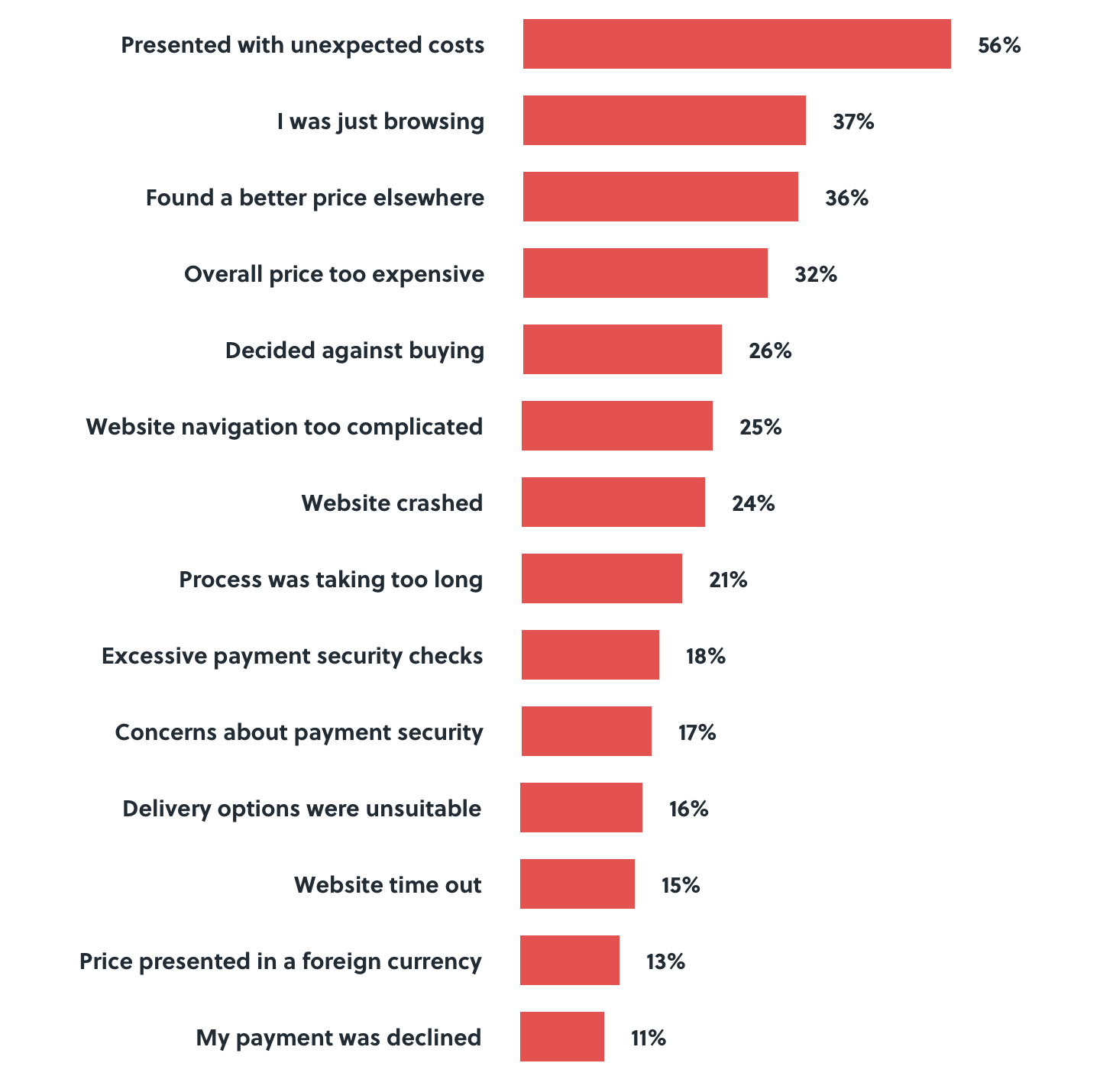
Overall, pricing plays a huge role in why people are leaving your e-commerce store for another. Besides lowering the prices of your products, you can offer a discount code.
They don’t have to be anything drastic either, 5% or 10% is more than enough.
I remember when I ran a few different e-commerce businesses and offering coupons was one of the biggest game-changers for me. It was the heart of my conversion rate marketing, and customers loved it!
Don’t worry about losing that little bit of profit from a discount, you’ll make up for it in more sales.
An optimal place to promote a discount code is in the header, look how Comfortable Clothing Inc. did it.

It’s in plain sight and with a bright color, so customers’ eyes will be drawn to it.
Next, the cart page itself is an effective page to promote discounts. Black Point Lobster used a discount calculator to entice customers to add more products to their cart for savings.
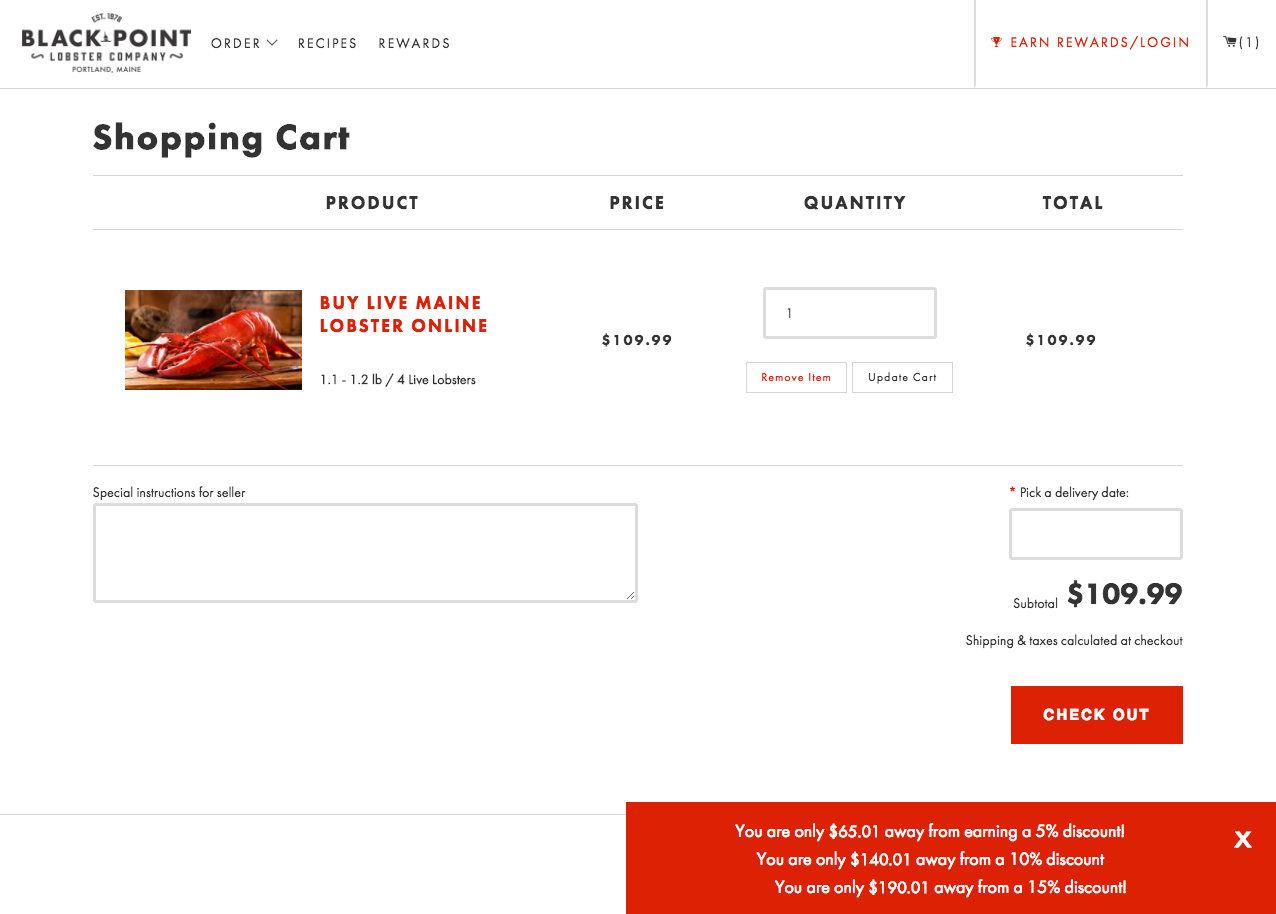
Seeing as 65% of shoppers say that a discount code makes or breaks their decision to buy, you’ll definitely want to make one right away.
As I mentioned earlier, use strong calls to action. For example, you might say “Claim this coupon today” or “Save 15% with this free discount code.”
Put these promotions and calls to action in all of the right places.
Where in particular?
Firstly, consider using a top bar or popup. This will grab people’s attention when they’re shopping online.
Framar does this perfectly for example.
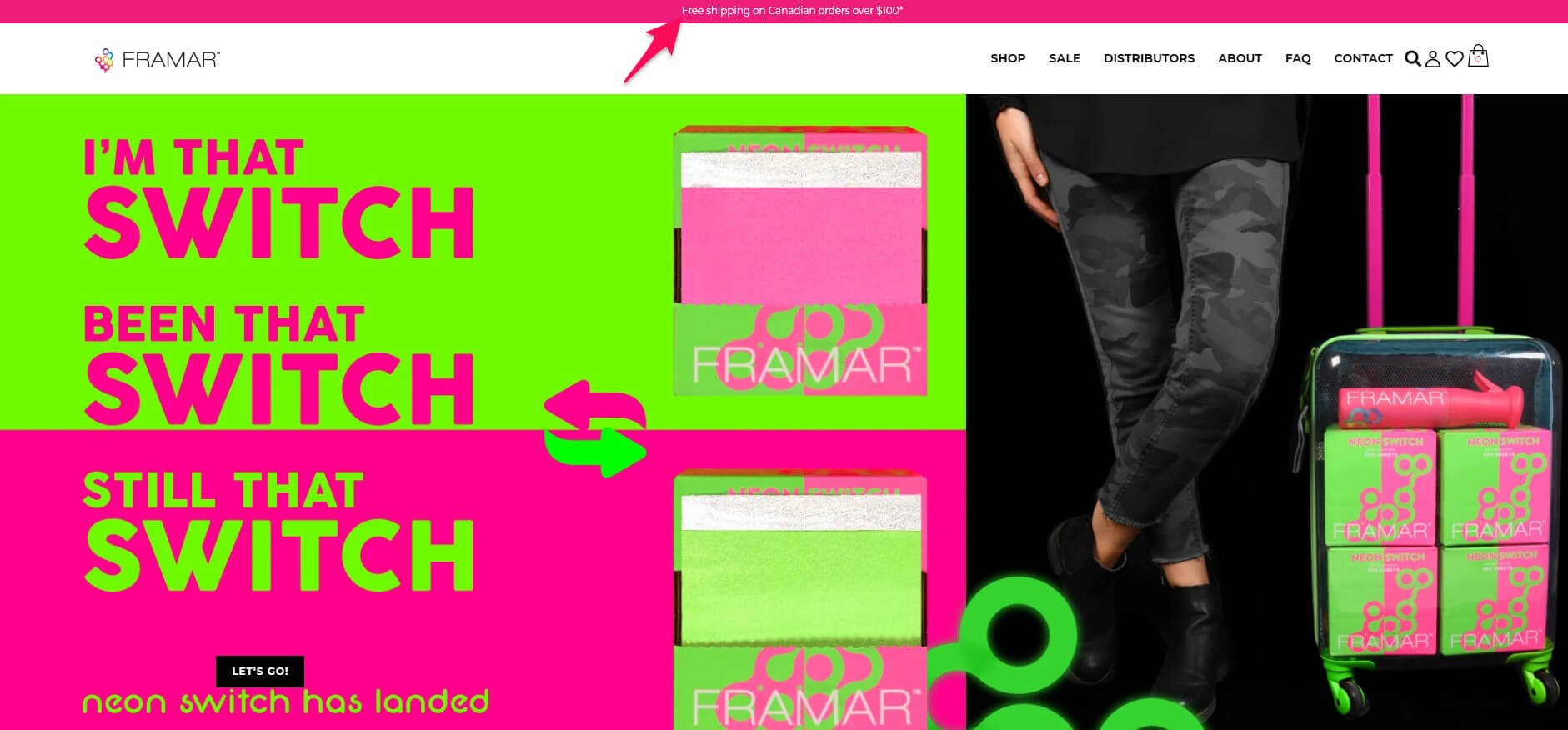
Secondly, above the fold. This is the section above the fold of a webpage. It’s the first thing that customers see so it’s extremely crucial to place important copy here.
Look how Hudson Bay includes promotions and discounts above the fold of its e-commerce website.
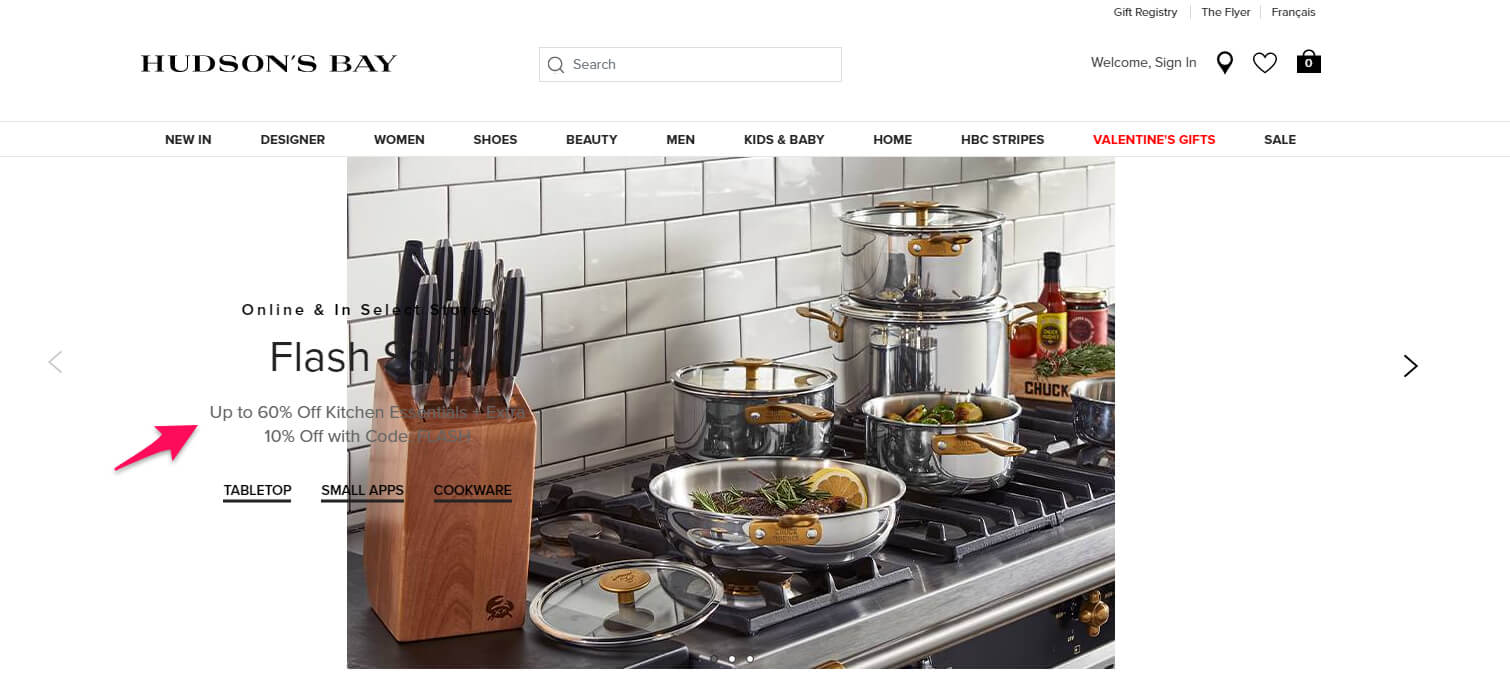
That brings me to my next point.
5. Offer Free Shipping
The #1 reason why customers abandon carts is because of unexpected costs. Guess what that tends to be.
Shipping, of course.
Imagine you’re shopping in a new online store. You love the products. You love the prices. Everything seems great. The last time you were this happy was in 7th grade.
Then you get to the checkout page…
The shipping calculator says that you need to pay an extra $35 to get your order. Blah!
We’ve all been there, so let’s avoid that experience for our own customers. How? With free shipping.
58% of e-commerce orders in 2014 included free shipping and this number is only going up. Match this approach so you don’t get beat by the competition.
And check these stats out:
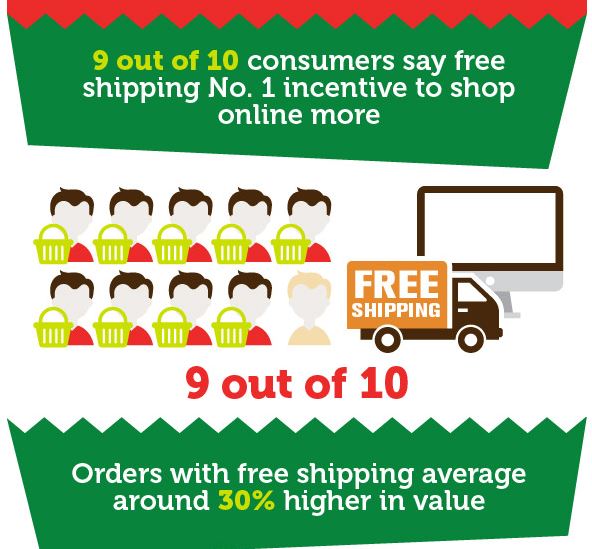
Not only are customers more likely to buy from you if you offer free shipping, but they will also purchase more items, too. This means more customers and higher revenue. Don’t you want that?
Have you ever shopped online and saw a notification that said you get free shipping if you add a certain amount to the cart? That’s a classic way to increase the average order cart value.
Shopify and many other e-commerce platforms make this easy to do so it’s worthwhile to test.
You can take a similar approach as I explained with discounts.
Promote free shipping through popups, top bars, banners, or above the fold of pages.
6. Abandoned Cart Strategy and E-Commerce Copywriting
The average abandoned cart rate is 69%. Ouch.
That’s a lot of revenue you are missing out on. Want to reduce how many customers churn and generate more sales?
Then you need an abandoned cart strategy and good e-commerce copywriting. If you were lucky enough to choose Shopify to host your e-commerce store, you’ll be happy to know they have a built-in system for this.
Shopify Nation elegantly shows us how in the following steps.
Step #1 – Enable abandoned cart in the checkout settings
Visit the checkout settings of Shopify and you will be able to enable abandoned cart notifications with a single click.
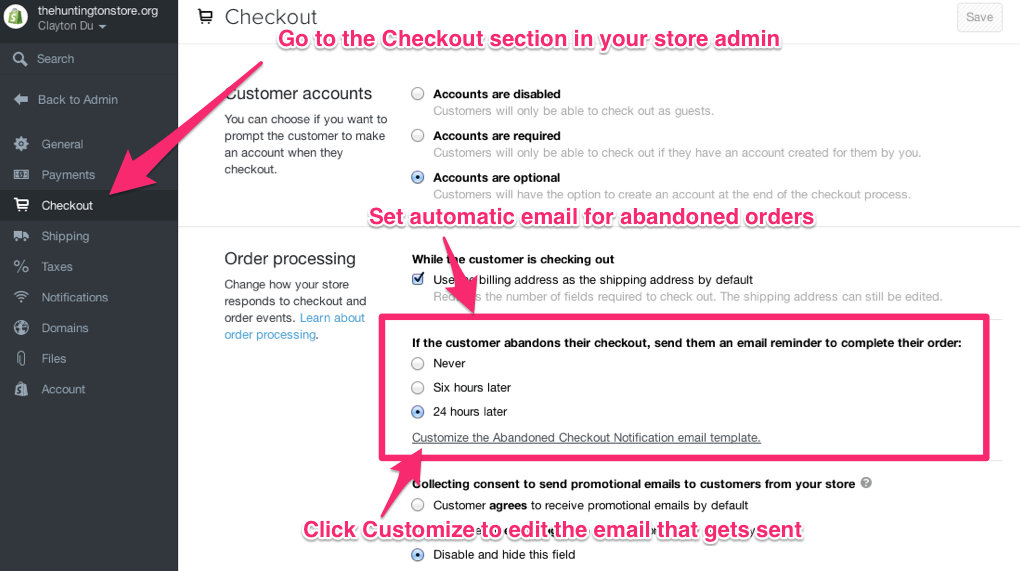
Click the option to customize the emails with your own sales copy.
Step #2 – Customize the email templates
Next, customize the email templates to remind customers they need to finish checking out.
Shopify provides pretty solid default templates, however, there’s always room for improvement.
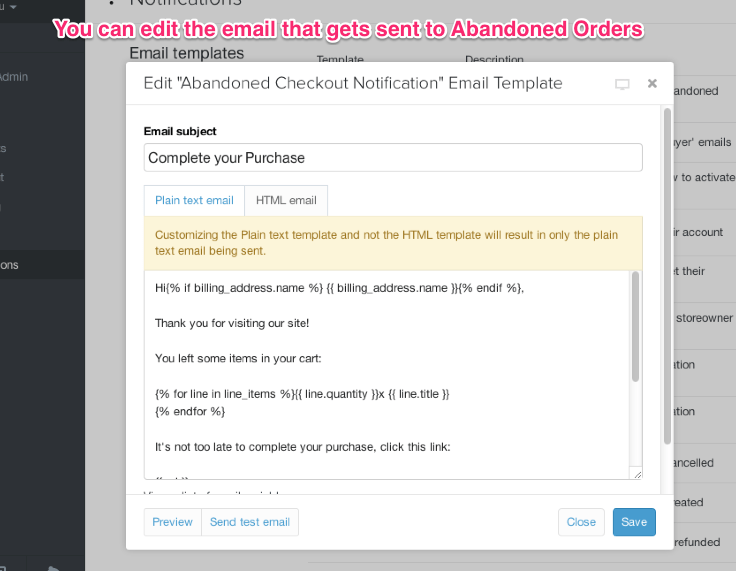
I recommend providing an incentive for turning.
This can be free shipping or a discount code as discussed earlier in this blog post.
Include one to two calls to action, telling the reader to return and finish checking out.
You can also create a sense of urgency or scarcity.
This is achieved by explaining to readers that their cart may disappear, the discount only lasts a specified amount of time, or inventory is low.
This pushes people to come back and purchase.
It’s also important that you send out a series of emails. Not just a single message and forget about them.
These should continually remind customers to check out, provide incentives, leverage customer testimonials, and share valuable content.
Step #3 – Send out abandoned cart emails to old customers
Finally, send out those bad boys!

View your abandoned carts via the “Orders” page and select to send them reminders.
Not everyone uses Shopify, many store owners take advantage of WooCommerce and WordPress. I used it myself for many different online businesses. I highly recommend it.
Unfortunately, WooCommerce doesn’t offer abandoned cart recovery built-in, you just have to install a small plugin.
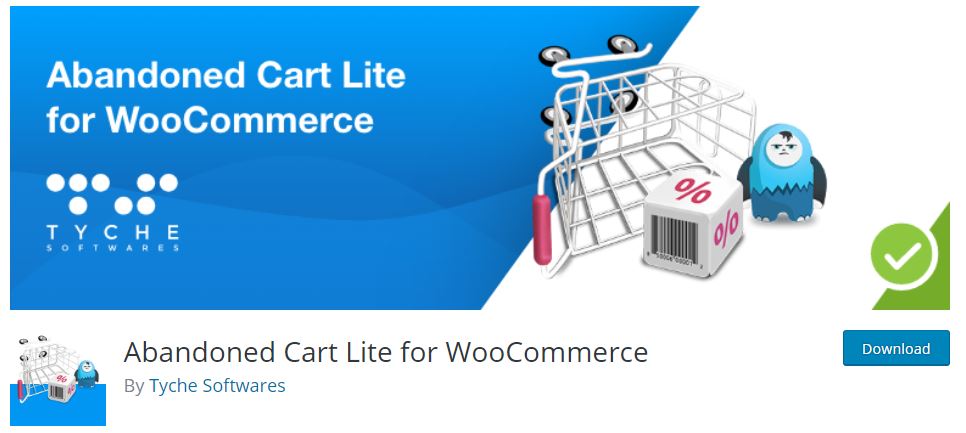
Abandoned Cart Lite allows you to manage all of your abandoned orders, automate recovery emails, and earn more sales.

Overall, abandoned cart recovery is one of the best e-commerce optimization methods.
7. Tweak The Sales Funnel
The sales funnel consists of the product page, cart page, and checkout page. The goal of any e-commerce business is to make every step as easy as possible for customers.
There’s a rule of thumb that customers should be able to reach checkout within three to four clicks.
So, how do we optimize the sales funnel? By beginning with the product page.
Product Page Optimization
If there’s one business we can all learn something from, it’s Amazon. They pull in billions so you can bet your butt that they put a lot of effort into the sales funnel.
Let’s take a look at their product page.
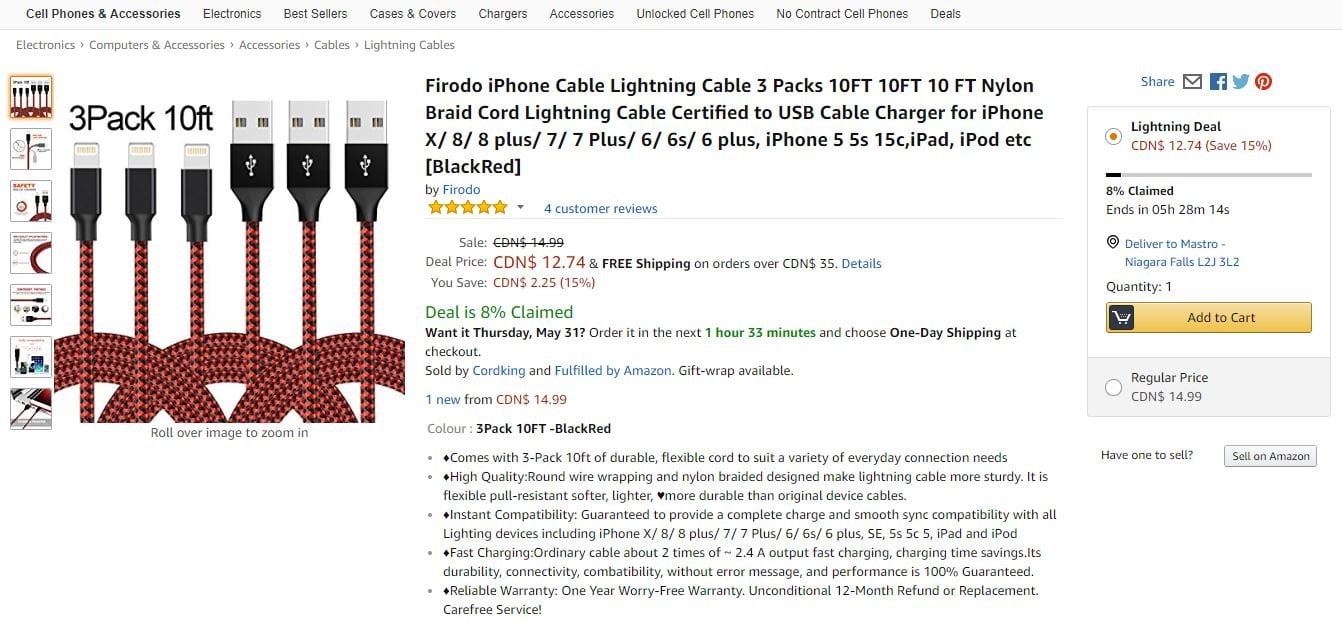
Here are a few things you can replicate to increase conversion rates:
- High quality product photos: A great selection of images that are high resolution, display multiple angles, and can be zoomed in on.
- Thorough product descriptions: Don’t hold back any information about the product. Include the features and benefits I taught you earlier in this article. Keep it organized and simple to read.
- Clear add-to-cart button: The colour contrasts with the page and is easy to see. It clearly states the quantity that’s being added too.
- Pricing: The original price is shown with a slash with the new sales price enlarged.
Strip product pages of fluff. You only want the essential information and photos that will help customers convert.
It’s also a great place to perform A/B split tests.
Add new sales copy, product images, layouts, etc. and observe how conversions change.
Optimizing The Cart Page
After a customer has added a product to the cart, where would they go next? The cart page.
Continuing off of the Amazon example, we can learn a thing or two from them here as well.
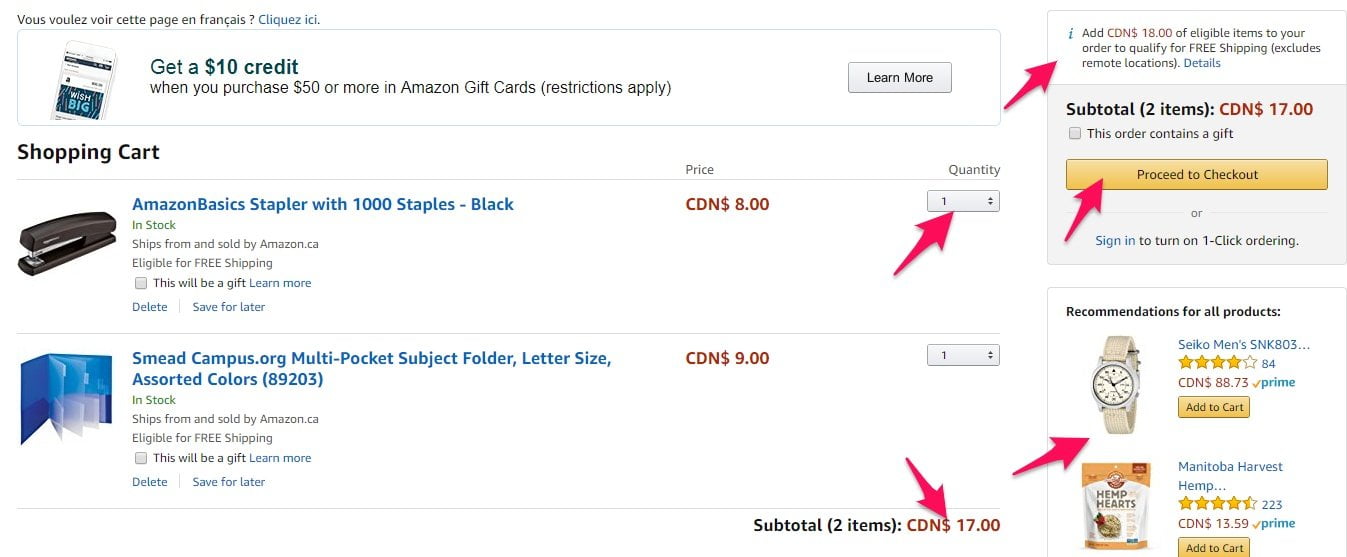
The subtotal is clearly displayed in red so we know exactly how much we are paying before shipping. It also says how many items we are ordering. The quantity can be changed directly from this page too.
There are recommended products on the sidebar that serve as an up-sell. Above the easily noticeable checkout button, there is a free shipping promotion.
Once again, it’s pretty bare-bones.
It includes all of the e-commerce copywriting and marketing essentials.
Checkout Page
The final frontier.
The last step before you have some cold hard cash in your pocket.
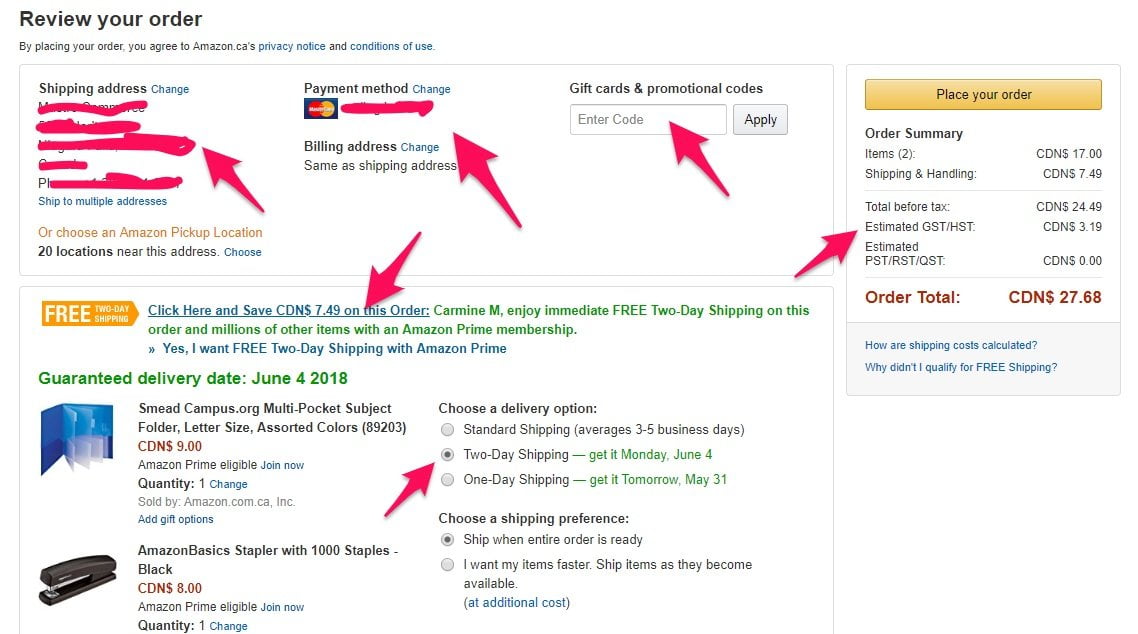
Some optimization practices you can learn from Amazon’s checkout are:
- Saved payment and shipping methods which make purchasing quicker and convenient.
- A coupon code entry in case a customer didn’t enter one earlier.
- Extra promotions as upsells to drive more revenue.
- Shipping methods with time estimates that answer objections and questions preemptively.
- A total including tax and shipping so customers know exactly how much they’re paying.
8. Drive Targeted Traffic With SEO
If you drive low-quality traffic to your store, you won’t convert any customers. This is because they aren’t your ideal demographic.
You can get the right customers landing on your website by taking advantage of targeted keywords.
A lot of people don’t realize that copywriting and SEO go hand in hand.
Think about it.
You’re not changing the look or feel of your store, just who is visiting it. That alone can increase conversion rates. 🚀
Sign up for Google Adwords so you have access to their in-depth keyword research tool.
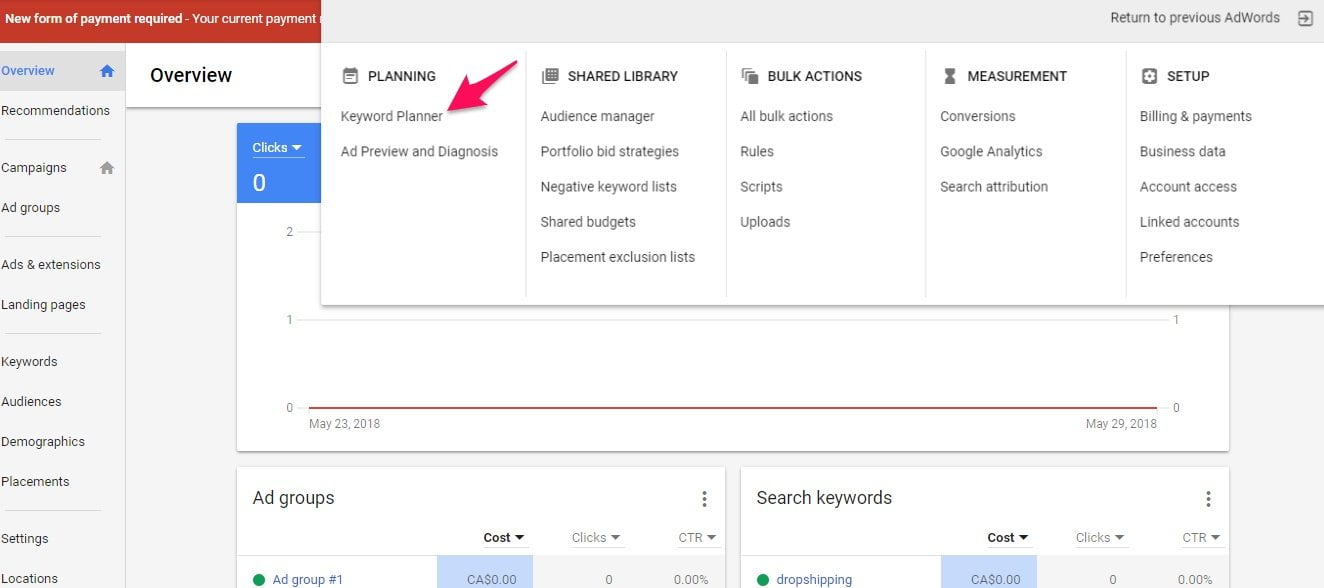
I prefer using the old version of the keyword planner, which if you scroll down, appears at the bottom of the page.
Either way, you’ll want to research keywords for:
- Your individual products
- The store itself
- Blog posts
Let me explain.
Imagine you sell men’s suede shoes, you first type that into the keyword planner.
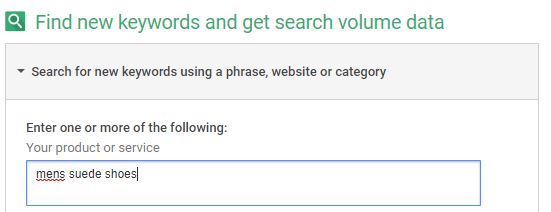
Google then displays related keywords with their respective search volume.
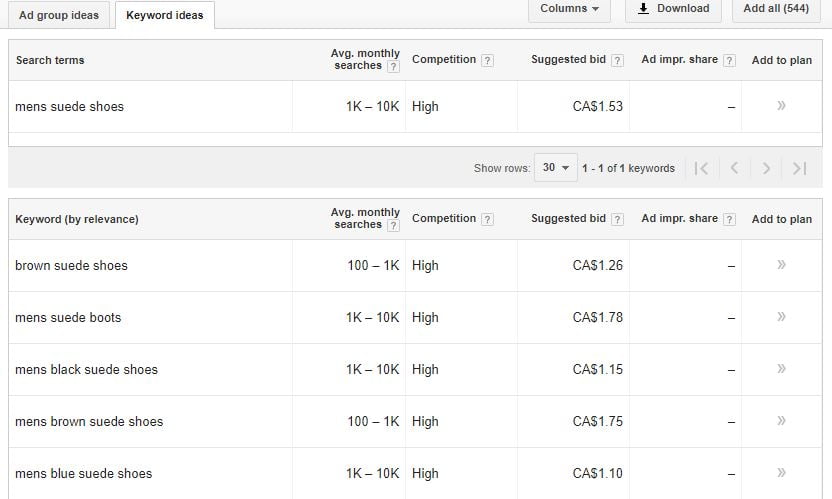
Create an Excel sheet or document to collect ones that you can use. They should accurately describe the products you sell so they attract the right customers.
The best part about keywords like this is that they have high buying temperatures. If someone is searching for men’s suede shoes, they are probably interested in owning a pair.
This is what we call the buying life cycle.
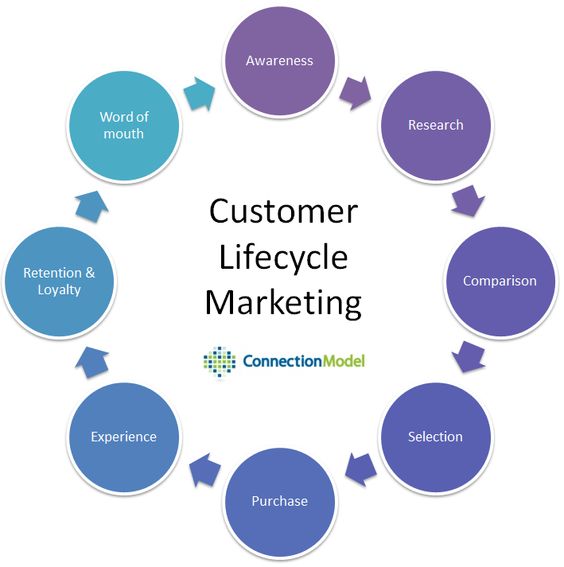
You could argue that keywords like these place the customer in the research phase, which would be very true. But in my experience, I have found that they convert very well.
Once you have a list of keywords, you might think, “What do I do with them?”
The next step is to place them naturally in your product page descriptions, titles, and URLs. Over time, you will rank higher for these search terms, organically bringing in likely customers.
So, what did I mean earlier by researching keywords for your store itself? Simple. A keyword or two related to what you sell like “Men’s online shoe store.”
Phrases like these can be placed on your about page or as the title tag of the website.
Lastly, every blog post you write needs to be centered around a main keyword and a secondary one as well. You are posting on your store’s blog, right?
Inbound marketing by far has the best ROI out of any strategy right now.
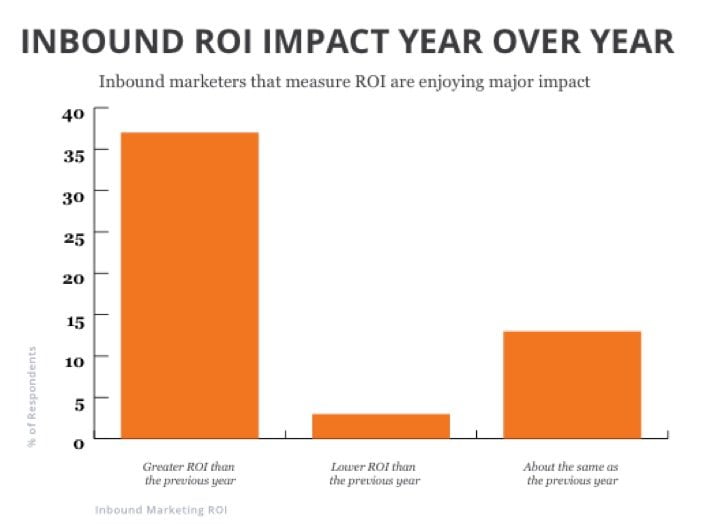
Regular articles provide free value to your customers and show that you care. It helps build trust and authority within your market as well.
9. Keep Your Branding on Point
Your brand isn’t just a logo or a color scheme – it’s the personality of your business, the vibe you put out into the world, the reason why customers keep coming back for more.
So, how do you keep your branding on point in your e-commerce copy? Start by defining your brand voice – is it playful and quirky, or serious and professional?
Whether you’re writing product descriptions, social media posts, or email campaigns, make sure your copy reflects the personality of your brand.
And don’t forget about your brand values – whether it’s sustainability, inclusivity, or innovation, weave them into your copy whenever you can.
Remember, consistency breeds familiarity, and familiarity breeds trust – so keep that branding on point, and watch your customers become loyal brand advocates.
10. Use Active Voice
This is an easy way to kick your e-commerce copywriting up a notch.
What’s the difference between passive and active voice, you ask? Well, passive voice lacks confidence and doesn’t grab anyone’s attention. Active voice, on the other hand, is strong and commands attention.
So, how do you use active voice in your copy? It’s simple – instead of saying “The product was loved by customers,” say “Customers loved the product.” See the difference?
Active voice is more direct, more engaging, and more persuasive – exactly what you want in your e-commerce copy.
It’s a quick and easy way to make your writing more compelling and often in fewer words.
11. Leverage Storytelling to Build an Emotional Connection
Humans are hardwired to respond to stories. They evoke emotion, build connections, and create memorable experiences – exactly what you want in your e-commerce copy.
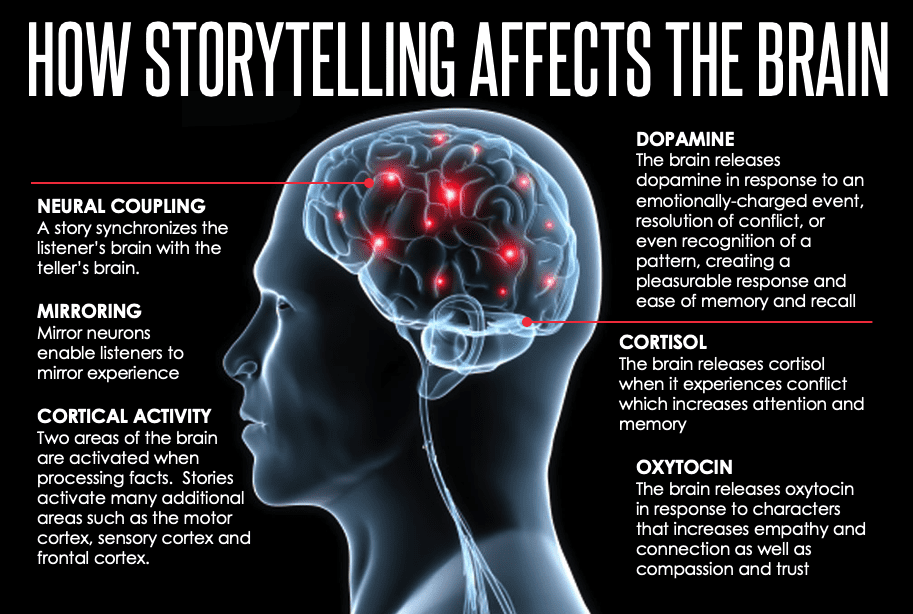
So, how do you leverage storytelling to build an emotional connection with your customers? Start by sharing the story behind your brand – why you started, what you stand for, and how you’re making the world a better place.
Then, weave stories into your product descriptions – instead of just listing features, paint a picture of how your product will improve your customer’s life.
And don’t forget about user-generated content – share customer stories, testimonials, and reviews to show real people using and loving your products.
The Bottom Line on E-Commerce Copywriting
You don’t always have to get more traffic to generate more revenue. Instead, it’s wiser to increase the conversion rate of existing traffic.
Begin by improving your e-commerce copywriting on your product pages. Use calls to action, exclusivity, and benefits to push customers to buy.
Most customers won’t purchase unless there is a coupon available and with today’s platforms, it’s easier than ever to create them. Whether it’s 5%, 10%, or more, ensure that you have a discount code available.
What’s better than a discount code? A discount code and free shipping. E-commerce stores can offer flat free shipping or make it available for customers that reach a certain cart total.
As not every cart actually makes it through checkout, store owners need an abandoned cart recovery strategy. Plugins, apps, and built-in functionality will take care of this.
The three most important pages of an e-commerce business are the product, cart, and checkout pages. Take the time to analyze these individually and improve the user experience. In turn, it will increase conversion rates.
You can have all of the traffic in the world, but if it’s not targeted, it won’t convert. Get your SEO into good shape with proper keywords so you have the best possible candidates browsing your products.
Check out my courses on copywriting to learn more and get coaching from me.














